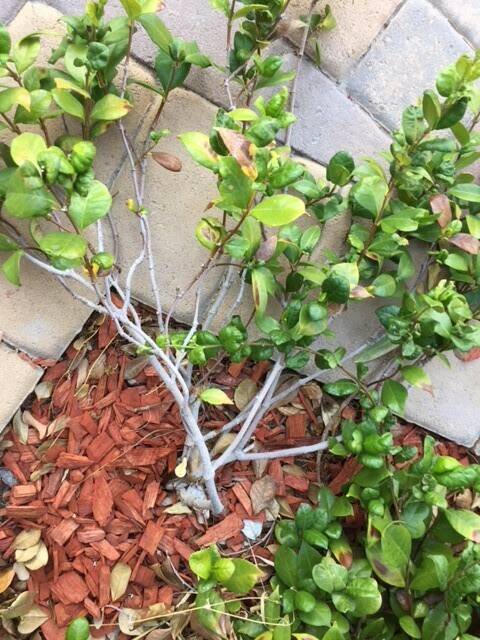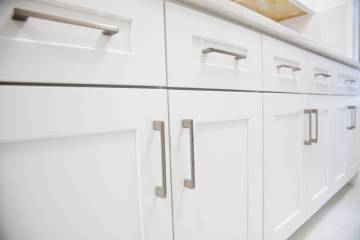Use fertilizer high in phosphorus to grow jasmine
Q: Can you provide any feedback on growing Arabian jasmine here in the Las Vegas Valley? I read on the internet to use a 10-30-10 fertilizer but can’t find any for home use. On the internet, folks promote their “special formula” for increasing blossoms. Also, any pruning tips to get the plants to grow along a trellis?
A: Any complete fertilizer high in the middle number — phosphorus — should be fine. That means any tomato or rose fertilizer should work. Notice they are recommending a fertilizer ratio of 1:3:1 (10-30-10).
There is no magic in fertilizers or fertilizer ratios. You just give the plant what it needs to support the habit of seasonal flowering. If you want to be exact when you fertilize it, then submit a soil test first and find out what is in the soil. Then add fertilizers to what is missing.
Most jasmines twine or spiral around uprights to get them to climb so anything that is upright should work. Arabian jasmine is a bit more sensitive to frosts than star jasmine so it may die back during a cold winter.
If the weather in the winter does not get very cold, it will grow again after it gets brown from the cold. If it gets very, very cold, then it may not.
This plant is from northern India and the Himalayas. Plant it and manage it on the east side of a building so that it gets afternoon shade.
It will need to be planted as any other nondesert plant; lots of organics in the soil and provide water periodically. Fruit trees are good examples of nondesert plants.
Plant it near a window or front door so you can smell the flowers. Arabian jasmine in the hot desert gets about 5 feet tall and about 5 feet wide.
Q: We are in the early stages of building a home and we planted some bare root fruit trees in early February. They have all done well except the Katy apricot started yellowing. It has temporary irrigation running three times each week. I am guessing it is a nutrient deficiency but would appreciate your expertise.
A: It looks like a very bad iron deficiency (yellow-green veins on new growth). Some soil sterilants can look like that, too. You have not used a sterilant (long-lasting general plant killer) nearby, have you?
If it is in fact iron that is needed, then an EDDHA iron chelate is preferred. If the soil for planting is good, you can use any commercial iron product (but not iron filings) as a soil application.
You are at the end of soil applications and you may have to spray it on. If that is the case, then any iron product will work. Use distilled water plus 1 teaspoon of dishwashing liquid per gallon of water in the spray mix. Many plants require two or three spray applications a week apart instead of one soil application in the early spring.
Q: Can you help me with what to do with my dad’s eucalyptus tree? The poor branches are mostly growing down instead of up. It is planted on a slope, mulch, emitters about 2-4 feet apart, three emitters on either side. It gets eastern sun. I have a eucalyptus in my front yard, western sun exposure, that is doing fantastic. Also, I have played classical music for it.
A: It doesn’t make much difference which eucalyptus it is, most stems grow up not down. The top grows up and the roots grow down in a fancy term when describing roots called “negative geotropism.”Most plants compete for light with other nearby plants so many plants want to get taller.
There are some “weeping” plants that were selected and grew because of this unusual feature. Some naturally weeping plants that we like for landscapes include the famous camperdown elm, weeping forms of redbud, weeping cedars, dwarf weeping willows and a dwarf mulberry. But for the most part plant tops want to grow upward instead of weep.
What I am getting at, unless you have chosen a weeping form of a plant (such as the weeping gums which can be some of the eucalyptus), the stems will grow upward without help. It’s genetic.
Q: I am very new to horticulture and I was recommended to start first with herbs. Can you recommend some 5- to 15-gallon herbs that would be good for a beginner in my area? I am in North Las Vegas, and I expect to get about four hours of direct sunlight per day.
A: I would suggest that you start with herbs that are leafy green and not flowering because you have so few hours of direct sunlight. I would suggest starting with seed first, not buying them in 5- or 15-gallon nursery containers.
Start growing some flowering herbs if and when you have determined that you have enough light. Most flowering plants need more sunlight than four hours. Just about all the leafy herbs will work, but start with basil and keep it harvested regularly even if you have to compost what you harvest.
Probably the most information is on growing herbs like basil, which are easy to grow in full sun. Start them as soon as the soil warms up. They just can’t tolerate freezing temperatures.
There are over 20 varieties to try. The most popular are lemon, the purple types and the larger-leaf Italian types. Planting is from about late March or early April. Basil can’t handle cold weather at all.
From that go into other herbs such as Greek, Syrian and golden oregano. Other nonflowering herbs you can try growing include parsley and cilantro. As you get into more and more herbs try some flowering types such as lavender.
If you want to grow microgreens for salads any seeds can be used except those in the tomato family. Microgreens are vegetables and herbs that are grown from seed into a seedling stage with their first true green leaves.
The first leaves to appear are called “embryonic leaves” and then the true leaves appear after that. Try broccoli, spinach and root crops such as radish, beets, etc. Seedlings taste about the same as adult plants.
There is a difference between sprouts and microgreens. You can read about the difference online if that interests you.
Q: I would like to get the soil tested in my raised garden beds and grow bags. How would I go about doing that and what steps would I need to take?
A: If you get a prepared soil already mixed with compost, you won’t need a soil test report. You can talk with salespeople and see what they recommend in place of a soil test.
It might save you some money unless you live in a state that has a soil testing lab at the land grant college. The University of Nevada stopped testing soils about 25 years ago. Private labs are available to homeowners.
The purpose of a soil testing lab is mostly for farmers. They use these soil testing labs for determining what fertilizers to use so they can save money. Most homeowners use fertilizers to grow vegetables in raised beds or on their landscape plants.
The cost of a private lab to analyze soil for lower nutrients is not as important. That being said, it is not a bad idea to establish a benchmark for fertilizers when you first begin. Then send a soil test for analysis once every three to five years to see where you are at. Most plants have enough nutrients in the soil to make them look good.
If you want to get a report of your soil, then I would send it to a reputable lab familiar with desert soils. Some places that come to mind include A and L Labs in Modesto, California (pick the graphical soil analysis report) or the IAS Lab in Phoenix.
Make sure you get a full soil test report that includes boron and sodium levels, EC (salinity), pH or alkalinity in the test results. The cost should be about $75 for a soil test. I can review the results for you for about $25 if you need it.
Bob Morris is a horticulture expert and professor emeritus of the University of Nevada, Las Vegas. Visit his blog at xtremehorticulture.blogspot.com. Send questions to Extremehort@aol.com.























